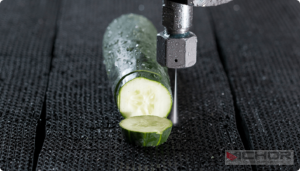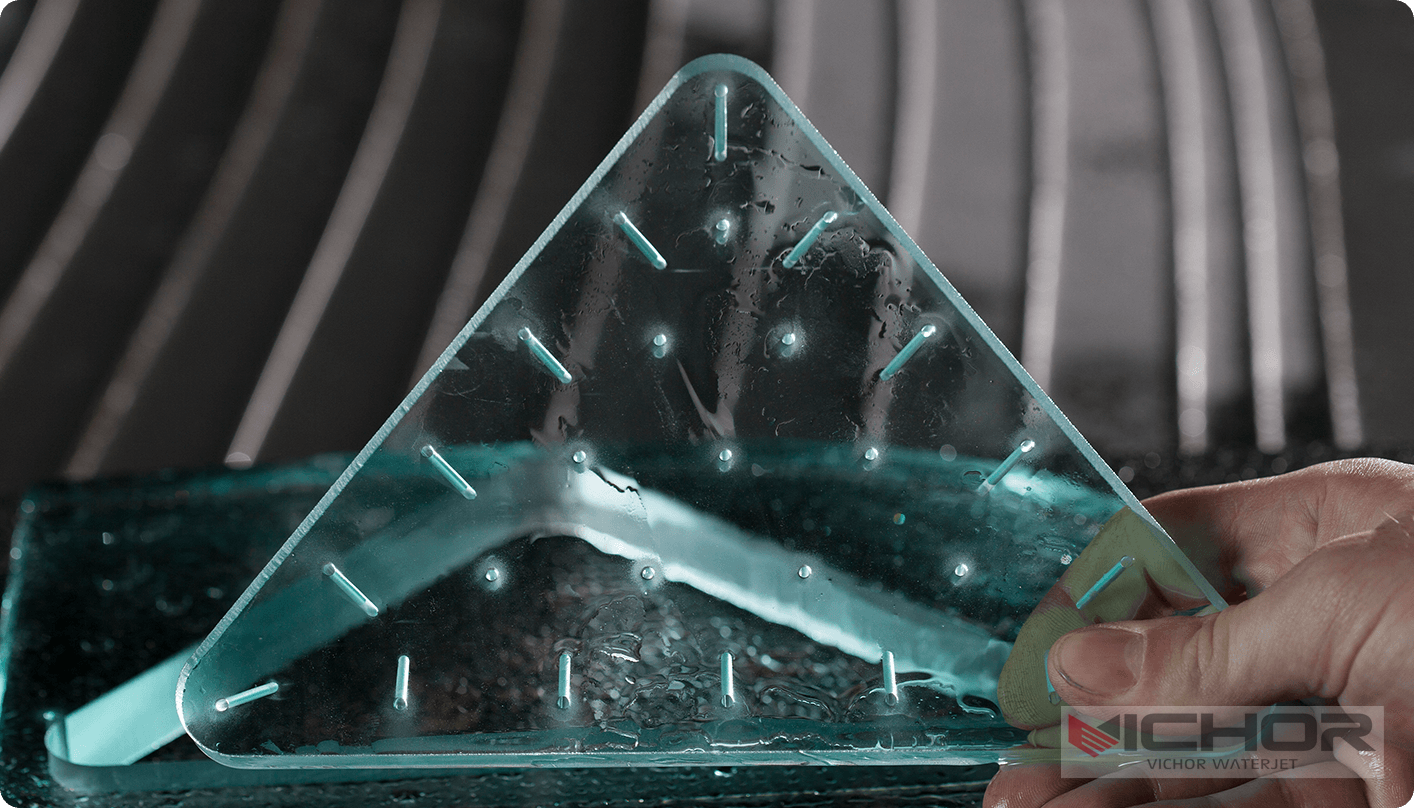
4x8 Waterjet Table: Everything You Need to Know Before You Buy
If you’re in the market for a powerful and versatile cutting machine, the 4×8 waterjet table is likely at the top of your list. This specific size has become an industry standard for a compelling reason: it offers an ideal balance of workspace, capability, and affordability for a vast range of applications. But what exactly makes this particular machine so popular? This comprehensive guide dives deep into the world of the 4×8 waterjet table, exploring its mechanics, benefits, applications, and key considerations to help you make an informed decision.
What Exactly is a 4×8 Waterjet Table?
A 4×8 waterjet table is a computer numerically controlled (CNC) cutting machine with a work envelope, or cutting bed, that measures 4 feet by 8 feet (approximately 1220 mm by 2440 mm). This standard size is designed to accommodate full-sized sheets of material, such as metal plates, stone slabs, glass, and composites, with minimal waste.
The core technology is abrasive waterjet cutting. In simple terms, the machine pressurizes ordinary water to an extreme level (often 60,000 PSI or higher) and forces it through a tiny gem orifice (like a diamond or ruby) to create a supersonic stream. For cutting hard materials, a granular abrasive (typically garnet) is mixed into this water stream. This combination erodes the material with incredible precision, resulting in a clean, detailed cut. The 4×8 waterjet table moves this cutting head precisely across the X and Y axes over the stationary material, following a path dictated by a digital design file.
The Unmatched Advantages of a 4×8 Waterjet Cutting System
Why has the 4×8 waterjet table become such a dominant force in manufacturing and fabrication? Its advantages are numerous and significant.
Versatility in Material Compatibility: Unlike laser or plasma cutters, which are limited by a material’s conductivity or melting point, waterjets can cut virtually anything. A single 4×8 waterjet table can process metals (titanium, steel, aluminum, brass), stone and tile, glass, rubber, composites, plastics, and food products. This makes it an invaluable all-in-one solution for many shops.
Cold Cutting Process: The waterjet cutting process is inherently cold. There is no heat-affected zone (HAZ) that can alter the material’s metallurgical properties, warp thin sheets, or create hardened edges. This is a critical advantage for materials that are sensitive to heat, such as tool steels or tempered glass.
High Precision and Accuracy: Modern 4×8 waterjet table systems are capable of holding extremely tight tolerances, often within ±0.001″ to ±0.005″. This precision allows for the creation of intricate shapes, sharp corners, and complex geometries that would be difficult or impossible with other thermal cutting methods.
Minimal Material Waste: The narrow kerf (the width of the cut) of a waterjet stream, especially when using dynamic waterjet cutting heads that compensate for taper, is remarkably small. The ability to nest parts closely together on a standard 4×8 sheet maximizes material usage and significantly reduces waste, improving overall cost-efficiency.
Ease of Use and Automation: Today’s systems are powered by intuitive software. Operators can import CAD drawings (e.g., DXF, DWG files), set cutting parameters, and let the machine run with minimal supervision. This automation boosts productivity and allows for consistent, repeatable results across multiple shifts.
Common Applications for a 4×8 Waterjet Table
The application list for a 4×8 waterjet table is nearly endless. You will find them in:
Metal Fabrication: Creating parts for aerospace frames, automotive components, machinery, architectural metalwork, and custom artwork.
Stone and Tile Work: Cutting intricate countertops, inlays, mosaics, and floor designs for residential and commercial projects.
Glass and Mirror Art: Shaping delicate glass for tables, decorative partitions, and artistic installations without causing micro-fractures.
Gaskets and Seals: Precisely cutting complex gaskets from rubber, foam, and composite materials for industrial use.
Manufacturing: Producing parts for the energy sector, marine industry, and any field that requires precise parts from durable materials.
Key Factors to Consider When Choosing a 4×8 Waterjet Table
Investing in a 4×8 waterjet table is a significant decision. Here are the crucial factors to evaluate:
Pump Type and Pressure: The heart of the system is its high-pressure pump. There are two main types: Intensifier Pumps and Direct-Drive Pumps. Intensifier pumps generate higher pressures (up to 90,000+ PSI) and are known for their power and consistency, making them ideal for heavy industrial use. Direct-drive pumps are generally more energy-efficient and have lower maintenance costs, operating at lower pressures (around 60,000 PSI), which is sufficient for many applications.
Table Construction and Drive System: A rigid, well-built table is essential for maintaining accuracy. Look for heavy-duty frames and linear guide systems. The drive mechanism can be based on precision ballscrews or rack-and-pinion systems, with ballscrews often offering higher accuracy for a machine of this size.
Control Software: The user interface is how you interact with the machine. Ensure the software is user-friendly, compatible with your CAD programs, and includes advanced features like automatic taper compensation and efficient nesting capabilities.
Abrasive Delivery System: A consistent and reliable abrasive feed is vital for cut quality. Look for systems with large hoppers (to reduce refill frequency) and technology that ensures a smooth, uninterrupted flow of garnet to the cutting head.
Technical Support and Service: The complexity of a waterjet system means service and support are non-negotiable. Research the manufacturer’s or supplier’s reputation for customer service, availability of spare parts, and technical support responsiveness.
Frequently Asked Questions About 4×8 Waterjet Tables
Q1: How thick of a material can a standard 4×8 waterjet table cut?
A: While the table size doesn’t directly dictate cutting thickness, the pump pressure does. A typical 4×8 waterjet table equipped with a standard 60,000 PSI pump can easily cut through over 6 inches (150 mm) of metals like aluminum and stainless steel and even thicker materials like stone and foam. Cutting speed will decrease as material thickness increases.
Q2: What is “taper” and how is it corrected?
A: Taper is a inherent characteristic of waterjet cutting where the jet stream can become slightly wider as it travels through the material, resulting in a cut that is not perfectly vertical. Modern 4×8 waterjet table systems use sophisticated “taper compensation” software or dynamic cutting heads that tilt slightly to eliminate this effect, producing cuts with parallel sides.
Q3: How expensive is it to operate a 4×8 waterjet table?
A: Operational costs include electricity, water, abrasive garnet (the largest consumable cost), and occasional replacement parts for the pump and cutting head. While initial investment is significant, the cost-per-part can be very low due to high material utilization and minimal secondary processing.
Q4: How loud is a waterjet system and what safety precautions are needed?
A: Waterjets are very loud, primarily due to the supersonic stream impacting the material and the water tank. Operating one requires hearing protection. Safety glasses are also mandatory to protect from splashback. Most industrial systems are fully enclosed with interlocked doors for operator safety.
Q5: What kind of maintenance does a 4×8 waterjet table require?
A: Regular maintenance is crucial. Daily tasks include checking abrasive levels and inspecting for leaks. Weekly and monthly tasks involve inspecting and replacing high-wear parts in the pump and cutting head, such as seals, orifices, and mixing tubes. Following the manufacturer’s maintenance schedule is key to longevity and consistent performance.
The 4×8 waterjet table stands as a testament to efficient and flexible industrial technology. Its ability to handle a massive range of materials with cold-cut precision on a conveniently sized bed makes it an indispensable asset for workshops and factories worldwide. By understanding its capabilities, advantages, and the key factors involved in its selection and operation, you can determine if this powerful tool is the right investment to propel your business forward. Whether you’re crafting intricate art or manufacturing critical aerospace components, the 4×8 waterjet table offers a unique combination of power and precision that is hard to match.
continue reading


